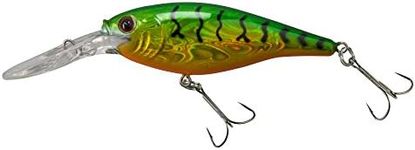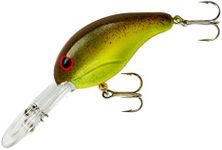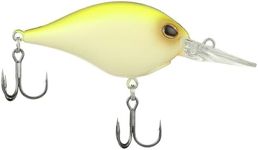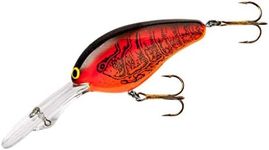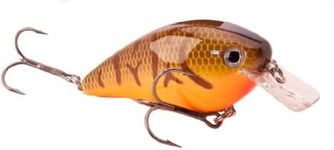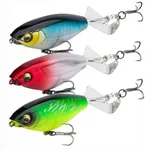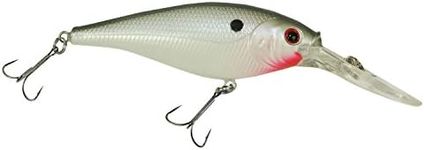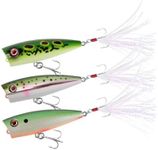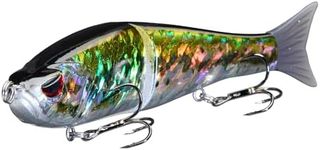Buying Guide for the Best Bass Crankbaits
Choosing the right bass crankbait can significantly improve your fishing experience and success rate. Crankbaits are designed to mimic the movement and appearance of baitfish, making them an effective lure for bass fishing. When selecting a crankbait, it's important to consider various specifications to ensure you pick the best one for your needs. Understanding these key specs will help you make an informed decision and increase your chances of catching bass.Diving DepthDiving depth refers to how deep the crankbait will go when retrieved. This is important because bass can be found at different depths depending on the time of year, water temperature, and other factors. Crankbaits are typically categorized into shallow (0-5 feet), medium (5-10 feet), and deep (10+ feet) diving. If you're fishing in shallow waters or near the surface, a shallow diving crankbait is ideal. For mid-depth waters, a medium diving crankbait works best. For deep waters, choose a deep diving crankbait. Consider the typical depth where you fish and select a crankbait that matches that depth.
SizeThe size of the crankbait can affect its visibility and the type of bass it attracts. Larger crankbaits are more visible and can attract bigger bass, while smaller crankbaits are less intimidating and can attract a wider range of bass sizes. Crankbaits generally range from 1 to 6 inches in length. If you're targeting larger bass, opt for a bigger crankbait. For a more versatile approach that can attract both small and large bass, choose a medium-sized crankbait. Consider the size of the baitfish in your fishing area and match the crankbait size accordingly.
ColorColor is a crucial factor in crankbait selection as it affects the lure's visibility and attractiveness to bass. Natural colors like silver, green, and brown are effective in clear water and mimic the appearance of real baitfish. Bright colors like chartreuse, orange, and red are more visible in murky or stained water and can attract bass from a distance. When choosing a color, consider the water clarity and the typical prey in the area. In clear water, go for natural, subtle colors. In murky water, opt for brighter, more visible colors.
ActionThe action of a crankbait refers to the way it moves through the water. Different crankbaits have different actions, such as wobbling, rolling, or vibrating. This is important because bass can be attracted to different types of movement depending on their mood and the conditions. Crankbaits with a wide wobble are effective in warmer water when bass are more active, while tight wobbling crankbaits are better in colder water when bass are less aggressive. Consider the water temperature and the behavior of the bass when selecting the action of your crankbait.
RattlesSome crankbaits come with built-in rattles that create noise as the lure moves through the water. This noise can attract bass by mimicking the sounds of prey or by simply drawing attention. Rattles are particularly useful in murky water or low-light conditions where visibility is reduced. If you're fishing in clear water or areas with high fishing pressure, a silent crankbait might be more effective as it appears more natural. Consider the water clarity and the fishing conditions when deciding whether to choose a crankbait with rattles.


